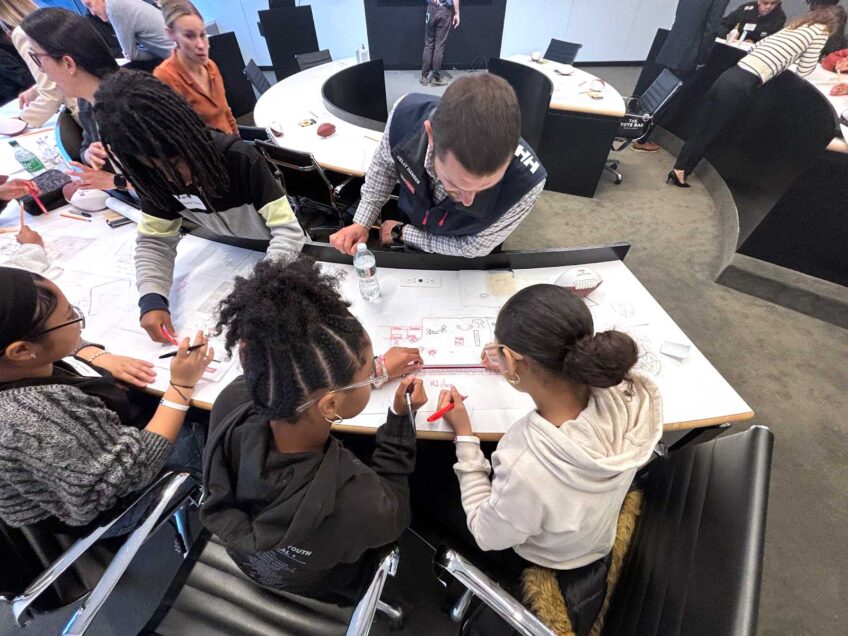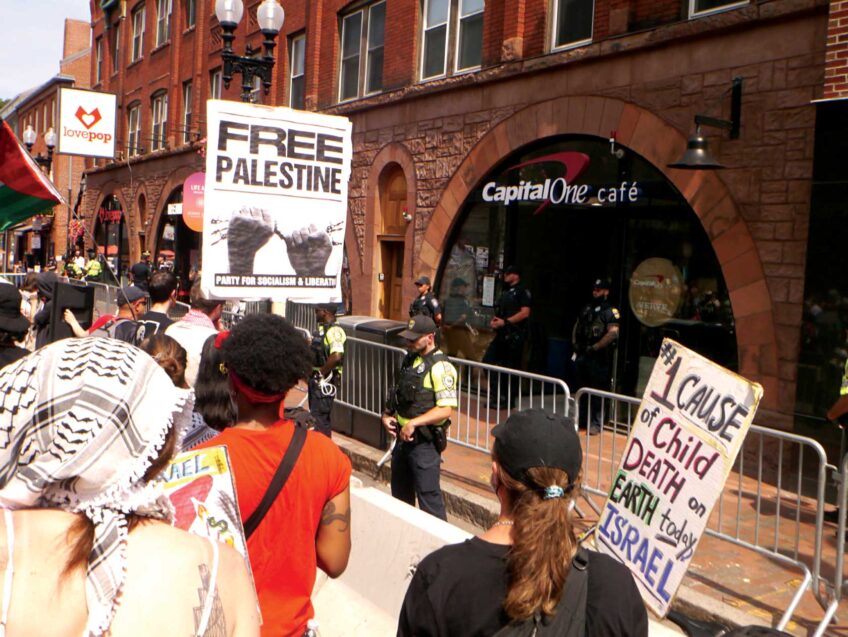
News the city is planning to shutter four Boston Public Schools buildings next year was met with frustration last week as activists renewed calls for the district to create a comprehensive facilities plan and conduct equity analyses before announcing school closures.
Boston Mayor Michelle Wu joined BPS Superintendent Mary Skipper last week to announce the closure of Excel High School in South Boston, the Dever Elementary School in Dorchester, the high school program at Community Academy in Jamaica Plain and the Mary Lyon Pilot High School. In addition, the Clapp and Winthrop Elementary Schools, both in Dorchester, will merge into a single school community.
The closures and merger are the latest in a series over the last decade driven by declining enrollment in Boston’s schools. While education advocates acknowledge that closures and mergers may be necessary to better marshal the district’s resources, activists reached by the Banner fault the district for making top-down decisions that they say don’t take into account communities’ needs.
“We’ve been complaining about the lack of transparency in their decisions for years,” said Barbara Fields, a member of the Build BPS Stakeholders Coalition. “There’s no discussion at all with school communities and parents.”
In response to questions from the Banner, a BPS spokesperson issued statement.
“The recommendations BPS is presenting to the School Committee on January 22 are grounded in the Long-Term Facilities Plan — a transparent framework for decision-making built directly from community feedback over a multi-year process,” the statement reads in part.
In December of 2023, the district submitted a long-term facilities plan to the state’s Department of Elementary and Secondary Education, but that plan did not include enrollment projections or a timeline for changes. Last year, BPS Superintendent Mary Skipper told GBH News that the district needed to work more closely with school communities on its facilities plans.
“We need to begin this work carefully with our school leaders and communities,” she told GBH News last year. “When students are impacted by closures, consolidations or other changes parents need to be confident that they will transition into high quality learning environments that meet their needs.”
While BPS officials have held meetings to engage parents and community members in discussions on Mayor Michelle Wu’s Green New Deal plan, which aims to invest $2 billion in construction of new school buildings and renovations to existing buildings, announcements on the closures of specific schools come without warning, often catching parents who selected the affected schools for their children off guard.
“Most parents find out about the closures on the evening news,” Fields said.
Travis Marshall, a BPS parent and member of the group Quality Education for Every Student (QUEST) says the meetings BPS has held with community members about the Green New Deal have been vague.
“Everything is theoretical when they bring the Green New Deal plan to people,” he said. “When they have forums, people vote on theoretical questions. Everything is in the abstract unless they’ve already made a decision and they’re trying to smooth things over.”
Marshall and other parent activists acknowledge the district needs to close and consolidate schools. As rents and housing costs in Boston have risen, families have left the city for lower-cost communities in the state. As is the case in other major cities in the U.S., parents are having fewer children, leading to enrollment declines in school systems. In the 2006-2007 school year, there were 56,000 students enrolled in BPS. In the 2023-2024 school year, there were 48,000.
At the same time, many smaller BPS schools lack basic amenities such as a cafeteria, lab space, gymnasium or school yard. Through its Green New Deal plan, BPS leaders seek to construct new buildings that provide such amenities. In recent years, new buildings such as the Orchard Gardens School and the Lila Frederic suggest the district is moving toward larger buildings that would replace multiple smaller buildings.
An equity issue?
BPS has for years had a reputation among education advocates for its top-down decision-making style. Over the last 10 or so years, many of the school closures and mergers have taken place in schools with majority Black and Latino populations, leading advocates to charge that the disruptions caused by school closures and mergers have had a disproportionate effect on those communities.
Under former Superintendent Brenda Cassellius, the district rolled out a racial equity planning tool and district officials pledged to analyze major decisions with an equity analysis. The department’s chief of equity and strategy, Charles Grandson, abruptly left BPS in fall of 2023 and was not replaced.
Suleika Soto, a parent organizer with the Boston Education Justice Alliance, said she and others have been calling for an equity analysis for school closures.
“Ever since Charles Grandson left, everything and anybody having to do with equity has gone away,” she said. “You don’t have the equity planning tool being used by this administration.”
In the statement provided to the Banner, BPS officials said they would make an equity analysis public when they present the plan for closures to the School Committee Jan. 22.
“Our focus is on providing a high-quality student experience to every single student, in every school,” their statement reads.
Of the schools in the latest round of closures, the Lyon and Clap are 85% students of color, the Dever and Excel are 90%, Community Academy and the Winthrop are both 97% students of color. System-wide, white students account for just 15% of the BPS population. But at schools with high concentrations of white students and low concentrations of African American students, Fields says mergers are handled differently. She points to the Sumner Elementary School, where Wu’s children are in attendance. White students there make up 25% of the student population and Black students, 15%.
While the predominantly Black Shaw and Taylor schools underwent a merger before the district secured them a new building, the Sumner and Philbrick schools have remained in their existing buildings while the former Washington Irving School building — where the merged school communities will be sited — undergoes renovations.
Fields also noted that the district has not tracked what happens to students after their school is shuttered.
“We still don’t know what happened to the students who left the West Roxbury Educational Complex,” she said. “They promised they would track that. They never gave us that information. There was no follow-through.”







